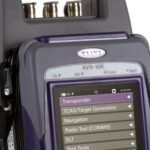A global team of researchers from Europe and Japan have developed a “partially edible” drone made from rice crackers that could be used to deliver life-saving nutrition and medicine for people in emergency situations.
In an abstract to their research paper, Bokeon Kwak, Jun Shintake, Lu Zhang and Dario Floreano – from the School of Engineering, Ecole Polytechnique Federale de Lausanne, in Switzerland, School of Informatics and Engineering, The University of Electro-Communication in Japan, and the Laboratory of Food Process Engineering, Wageningen University and Research in the Netherlands – said: “Drones have shown to be useful aerial vehicles for unmanned transport missions such as food and medical supply delivery.
“This can be leveraged to deliver life-saving nutrition and medicine for people in emergency situations. However, commercial drones can generally only carry 10% − 30% of their own mass as payload, which limits the amount of food delivery in a single flight.
“One novel solution to noticeably increase the food-carrying ratio of a drone, is recreating some structures of a drone, such as the wings, with edible materials.
“We thus propose a drone, which is no longer only a food transporting aircraft, but itself is partially edible, increasing its food-carrying mass ratio to 50%, owing to its edible wings.
“Furthermore, should the edible drone be left behind in the environment after performing its task in an emergency situation, it will be more biodegradable than its non-edible counterpart, leaving less waste in the environment.”
Rice crackers as wings
The research proposal suggests using rice crackers as the wings of the drone along with an edible adhesive.
They concluded: The edible-winged drone described in this paper is the first aerial system (partially) made of edible material, proposing a novel food mobilisation method for delivering life-saving nutrition.
“Until now, the amount of food that existing drones could carry was restricted to the payload. However, an edible drone can distinctly overcome this payload limitation, owing to the recreation of some body structures with food materials.
“A scalable design method is studied, which enables the designer to embed a specific amount of nutrition and water into a drone.
“The ability of the proposed edible-winged drone to fly is also shown, which demonstrates its future applicability to rescue missions, where emergency nutrition can be delivered to people in need.
“Owing to the facile fabrication method of this prototype, multiple edible drones could be easily fabricated and deployed, allowing for the delivery of much higher amounts of nutrition.
“This study shows that it is feasible to fabricate a drone, the body of which contains nutrients that could be delivered to areas with difficult access in emergency situations.”
Subscribe to the FINN weekly newsletter

